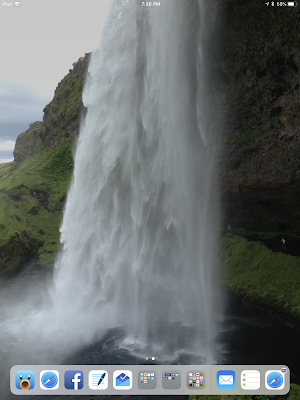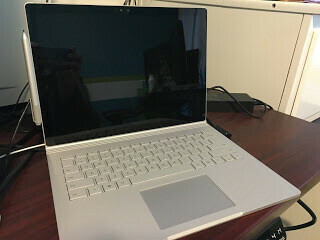An iOS Laptop
The one device I would like Apple to release in 2018 is a laptop that runs iOS. I have been thinking about this a lot since reading Jason Snell’s piece at MacWorld, Why Apples Next Laptop Should Run iOS and the related discussion on Upgrade #168: Hail Hydrant. The addition of the Files app and better multi tasking in iOS 11 has made the iPad an even better alternative for those looking to get rid of their Windows or Mac laptop. However, I haven’t seen a lot of people switching out there laptops for an iPad, but instead moving towards Windows or Chrome OS convertible devices. I think the tablet form factor of the iPad combined with some out of date understanding of the capabilities of iOS coupled with the adoption of Chromebooks in schools is keeping people from making the switch.
It seems strange, but I think one of the big things keeping the iPad out of the conversation is the tablet form factor. If a person is looking to replace their old laptop or desktop they look at the iPad and it just does not seem like a replacement because it is perceived as just a tablet. They may see the Smart Keyboard attached to it in the store, but that is just an accessory for a tablet. People seem to have an association with the first class keyboard and a “main” computing device. The laptop form factor provides an extra level of comfort and consistency users may not feel with a tablet. The Smart Keyboard is also limited to being used on hard surfaces, which might also turn some people off.
The next thing holding back the iPad as a person’s main computer is the misconception that you can’t do a lot of “computer” things on them. It is probably just a hold over from the early days of the iPad when it was the next big thing and not only was the operating system pretty limited, but the quality of apps in the app store was also very low. Most people held on to their iPad 1 or iPad 2 for several years and never got to experience the more powerful iPads of the last few years or the new crop of apps that pushed the limits of tablet computing. If it was not for the last two years of daily iPad use and hours of podcasts helping me retrain my brain to work with a different style OS, I might also disregard the iPad Pro too.
Chromebook adoption in school’s could also be a factor as children start to get their own devices at home. My son has been using Chromebooks in school for a couple years now and has become very proficient navigating Chrome OS. Last fall, his homework required a device at home and he asked for a Chromebook. After a little research I found that while the low end Chromebooks are cheap; in order to get something with a little more longevity and higher quality you have to spend quite a bit of money. I briefly considered getting a MacBook for him, but then realized if anybody could make an iPad work for his tasks it was my son. I explained to him how his iPad Air could do all of the things the Chromebook could do and more. Of course the lack of a keyboard was an issue so I bought the Element Digital bluetooth keyboard case and despite the smaller keys he is quite happy with his setup. Unfortunately I think we are the exceptional case and most parents would purchase a $200 Chromebook and call it a day instead of spending twice as much for an iPad and a keyboard.
The combination of iOS and the iPad is now mature enough to be used by most people as their non-smartphone device. The first step Apple should take is to create an iOS device with a more familiar laptop form factor for iOS. The device would still support touch for some activities, but the keyboard would be the main input device. It would require a little more polish to keyboard shortcut on iOS, but for the most part it should be compatible out of the box. The next part is a bit trickier and involves Apple getting the word out that iOS on iPad can now do much more than it could back in the iOS 5 days when they owned their first iPad. Finally the new lower price point for the regular iPad should help make the iOS on iPad experience much more affordable when compared to other devices and the iPad Pro. I am convinced that iOS is the future of Apple devices and now is the time to start to expand beyond the old tablet form factor and into more interesting form factors like a 13” laptop or maybe even something as boundary pushing as a 21” desktop machine.


